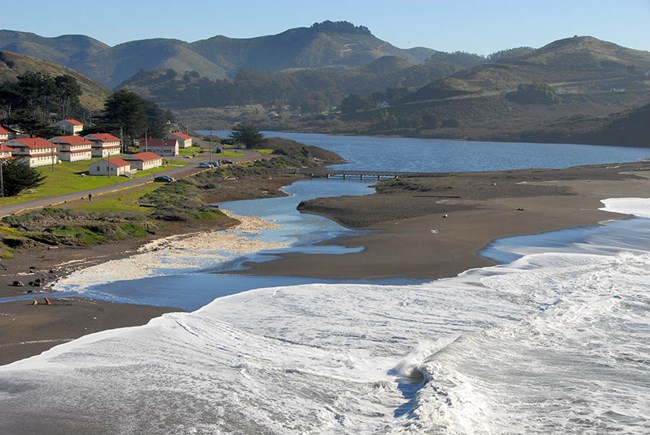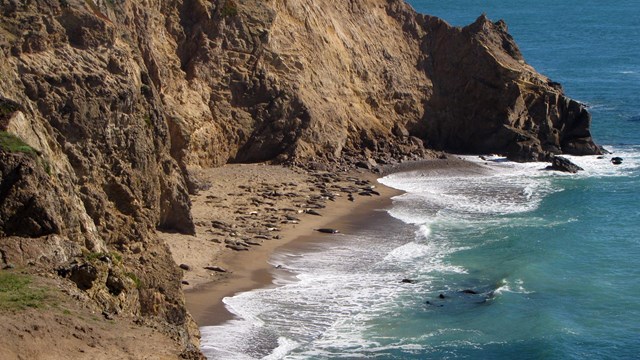
NPS / Jessica Weinberg McClosky
Climate change—associated with rapid warming of the Earth’s atmosphere and oceans—has been underway since the last century and is predicted to accelerate over the next 100 years. Depending on future greenhouse gas emissions, the average temperature worldwide could increase 3–10°F and sea level could rise 2–5 feet by 2100.
Even small increases in temperature and sea level can have big effects. Compared to 100 years ago, California’s average temperature is 1°F higher, and Sierra Nevada snowpacks melt 2–4 weeks earlier, and flowers bloom 1–2 weeks earlier. A sea level rise of 1 foot could erode some shorelines back 100 feet and, when coupled with more intense storm surges, make today’s 100-year floods occur every 10 years in low coastal areas.
Other local impacts of climate change are less certain. This is especially true along the coast, where rainfall and summer fog could either increase or decrease. In turn, the frequency and intensity of fire could also increase or decrease. Either way, new weather patterns could alter the many Bay Area microclimates, which range from foggy shorelines to sunny inland areas. This could disrupt the plant and animal communities adapted to particular microclimates, leading to the invasion of non-native species that tolerate a wider range of temperatures and precipitation.
To help protect San Francisco Bay Area Network ecosystems, park staff monitor indicators of climate change including temperature, sea level, precipitation, fire, invasive species, and the timing of blooming, nesting, and migrations. Park staff also participate in the Climate Friendly Parks program, a collaboration between the National Park Service (NPS) and the U.S. Environmental Protection Agency that includes reducing parks’ carbon footprints, adapting to climate change impacts, and public education. Nationwide, NPS has joined inter-agency Landscape Conservation Cooperatives (CCC) formed by Department of the Interior to address climate change impacts that extend beyond the borders of protected areas, such as effects on drought, wildfire risk, species invasions, and wildlife migration patterns. The California CCC will focus on sharing resources, knowledge, and lessons learned to enhance conservation efforts throughout the state.

Browse articles and information summaries about climate change in the San Francisco Bay Area, and get answers to frequently asked questions.

Watch and listen as you explore climate change issues in the San Francisco Bay Area.

Get the latest on climate change from the Bay Area Nature & Science Blog.
Last updated: April 27, 2018
